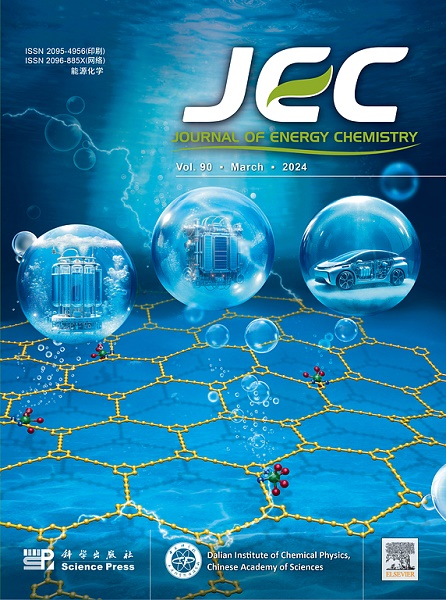Advancing non-carbon energy: optimized and safely operated solid oxide fuel cell design for industrial feasibility
IF 13.1
1区 化学
Q1 Energy
引用次数: 0
Abstract
As the world shift towards sustainable energy solutions, solid oxide fuel cells (SOFCs) using non-carbon fuels like ammonia and hydrogen emerge as promising pathways to produce clean energy and enhance conversion efficiency. However, current implementations encounter challenges such as nitriding effects from direct ammonia injection to the stack, overestimated benefits of anode off-gas (AOG) recirculation, and a sole focus on electrical efficiency that overlooks the thermal advantages of SOFCs. This study addresses these gaps through a comprehensive multi-objective optimization of SOFC systems fueled by ammonia and hydrogen, assessing their efficiency, fuel utilization, and heat exergy. The research translates material phenomena into mathematical constraints and quantifies the effects of control variables through systematic parameter variation. Results indicate that ammonia-fueled SOFC systems slightly outperform hydrogen, achieving an electrical efficiency of about 65% compared to 62% for hydrogen systems, although hydrogen demonstrates superior fuel utilization and exergy efficiency. Optimal AOG recirculation and NH3 cracking fraction that do not compromise stack lifetime and stay in the safe operating zone of nitriding are identified. It also challenges the assumptions that a higher AOG recirculation can benefit performance, suggesting that more extensive AOG recirculation might not always enhance it. Soft sensors are provided to predict system's performance and enable proactive adjustments to facilitate industrial applications where some parameters, such as high-temperature stack's pressure drop, are costly or difficult to measure. This study significantly advances the practical deployment of SOFC technologies, enhancing their feasibility for sustainable energy development.

求助全文
约1分钟内获得全文
求助全文
来源期刊

Journal of Energy Chemistry
CHEMISTRY, APPLIED-CHEMISTRY, PHYSICAL
CiteScore
19.10
自引率
8.40%
发文量
3631
审稿时长
15 days
期刊介绍:
The Journal of Energy Chemistry, the official publication of Science Press and the Dalian Institute of Chemical Physics, Chinese Academy of Sciences, serves as a platform for reporting creative research and innovative applications in energy chemistry. It mainly reports on creative researches and innovative applications of chemical conversions of fossil energy, carbon dioxide, electrochemical energy and hydrogen energy, as well as the conversions of biomass and solar energy related with chemical issues to promote academic exchanges in the field of energy chemistry and to accelerate the exploration, research and development of energy science and technologies.
This journal focuses on original research papers covering various topics within energy chemistry worldwide, including:
Optimized utilization of fossil energy
Hydrogen energy
Conversion and storage of electrochemical energy
Capture, storage, and chemical conversion of carbon dioxide
Materials and nanotechnologies for energy conversion and storage
Chemistry in biomass conversion
Chemistry in the utilization of solar energy
 求助内容:
求助内容: 应助结果提醒方式:
应助结果提醒方式:


